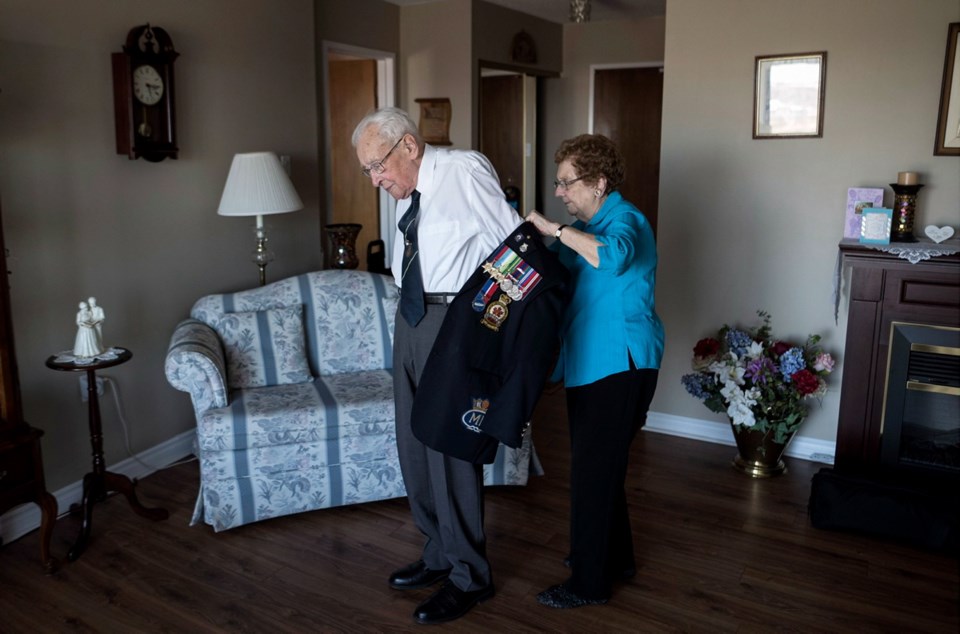ST. JOHN’S, N.L. — Norman Crewe still hears the sound of men crying out from the dark waves of the North Atlantic for help that wouldn’t come in time.
“It stays with you for the rest of your life,” he said. “You’d never forget it if you lived to be 100.”
Crewe, who is 95 now, was among 12,000 men and women who served in Canada’s Merchant Navy during the Battle of the Atlantic.
The pivotal fight between the Allies and Germans for control of crucial shipping supply routes was the longest campaign of the Second World War. It stretched from September 1939 to when the last of the German U-boats surrendered after Victory in Europe Day in May 1945.
Crewe made at least 14 round trips on vessels bound for Britain, carrying everything from eggs to ammunition. He travelled in columns of ships that stayed together for protection against attack from above and below. Enemy aircraft and submarines were constant threats.
If a ship two columns over got torpedoed, the others had to keep going, Crewe recalled.
“You were not allowed to stop.”
Once the rest of the convoy passed, an escort would go back to circle for survivors, he said from his home in Halifax, where he first joined the Merchant Navy in 1940.
To this day, his heart goes out to those doomed men in the water.
“Not only did they drown, but a ship coming up in the same column behind, in the dark … they’d just run over those guys. They wouldn’t know it.”
Crewe resisted telling such stories for decades. But in recent years he has spoken in schools about memories that still fill his eyes and halt his speech.
“I realize now, if we don’t tell the kids what really happened, how are they going to be able to tell somebody else about it?”
Crewe has two great-grandsons who aren’t yet in high school.
“I pray to God the day will never come that they will have to go through what we went through.”
Crewe served mainly on the Lady Rodney, one of five vessels named for the wives of British admirals with ties to the West Indies. It was known before the war in the 1920s and ’30s as a luxury cruise liner.
Crewe’s experience was different. He remembers the time he was most frightened: arriving to board the vessel for a July 1943 trip from Halifax to a British naval base. The ship’s exposed forward decks were chock full of depth charge anti-submarine explosives in full view of enemy planes.
He said by the time they reached their destination a week later, “I could recite the Lord’s Prayer backwards.”
“All we needed was just one to go, and of course it would be like a flash of lightning.”
And then there were storms.
“Anybody that travelled the North Atlantic in the winter time, they went through hell and high water,” Crewe said.
Many times the rails on his bunk kept him from pitching out of bed in vicious weather that turned waves into mountains. He and other young seamen, just kids in their early 20s, were often called out on decks to chip away thick ice that formed as spray froze.
Icebergs were a major hazard in spring.
“The worst was what we called growlers. Those are chunks of ice just above the water,” that can slice a metal hull like a can opener, Crewe said. “Those are very, very dangerous.”
He lost more friends than he can count or name. “Too many.”
Canada’s Merchant Navy had a staggering casualty rate, with more than 1,700 dead and more than 70 Canadian merchant ships sunk.
“I’m one of the lucky ones,” Crewe said. “I came back.”



